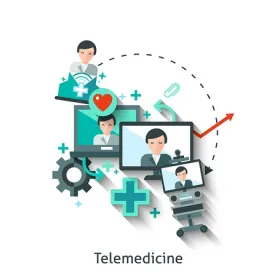When we launched Foley’s inaugural Telemedicine and Digital Health Survey in 2014, it was apparent that health care executives weren’t ready to make telemedicine a significant focus of their business and patient strategies. The interest was there but, despite tremendous technological breakthroughs and imaginative applications, most telemedicine programs were in the early stages and there was little acceptance by the broader health care community.
Fast forward to present time and the industry outlook has changed dramatically, due in large part to proven patient outcomes and surging demand among providers looking to improve the quality of care in a more convenient, cost-effective manner.
According to our 2017 survey, where we queried a range of executives at hospitals, specialty clinics, ancillary services and related organizations, three-quarters of respondents currently offer, or are planning to provide, telemedicine services. Now, compare that to three years ago when nearly 87 percent didn’t expect their patients to be using telemedicine services by this time – that’s quite a turnaround.
Beyond adoption, providers reported strong satisfaction with the telemedicine platforms they were using; over half of the organizations that track return on investment reported savings of 10 percent or more. And, a third of respondents said 50 percent or more of patients continued to use telemedicine after an initial visit, demonstrating growing patient satisfaction with the service.
The deluge of telemedicine programs entering the mature and implementation phases doesn’t come without complications, however. Providers are already looking to expand their telemedicine programs overseas, where they’ll encounter unfamiliar governance in foreign jurisdictions. Furthermore, there’s still more work to be done here in the United States, where the Food and Drug Administration needs to weigh in on new software and other digital health technologies, and state and federal governments must reduce regulatory ambiguities and barriers.
These complex issues can and should be considered great opportunities for the health care industry’s major players. Those that are able to navigate new and existing laws and regulations will better positioned to take advantage of the rapid advancements in technology which, in turn, will enable them to provide innovative care for patients in new markets around the block and around the world.




 />i
/>i

